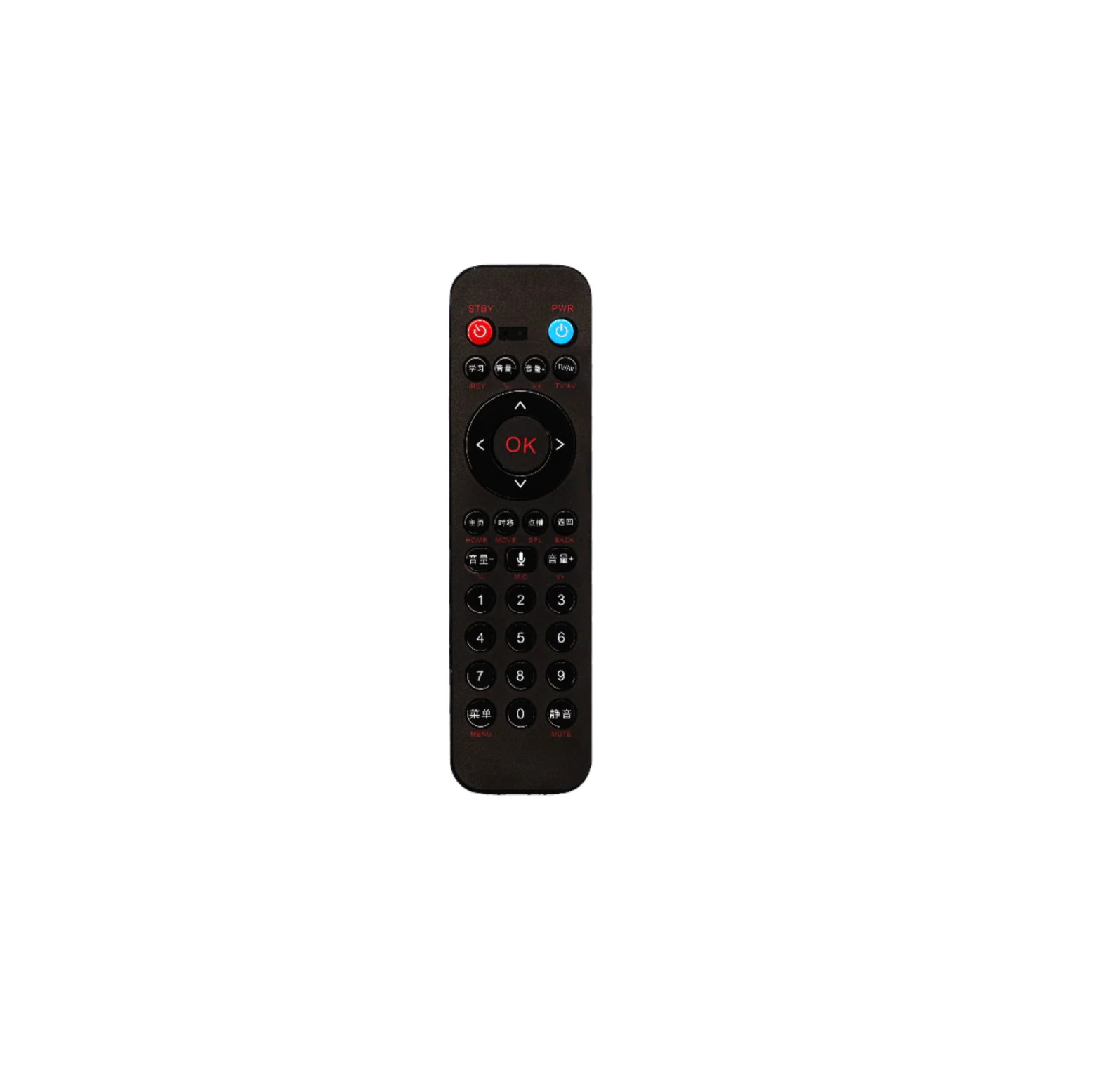TELINK RCU TLSR8258ARC48D Mouser

Product Introduction
This is a user manual for Telink RCU TLSR8258ARC48D.
General description
The TLSR8258ARC48D, which is based on Telink TLSR8258F512ET48 chip, provides a Bluetooth LE wireless system.The TLSR8258F512ET48 integrates a power-balanced 32-bit MCU, BLE , 64kB SRAM, 512kB internal Flash, 14bit ADC , 6-channel PWM, flexible GPIO interfaces, and nearly all the peripherals needed for IoT (Internet of Things) and HID (Human Interface Devices) application development (e.g. Bluetooth Low Energy ).
Key features
- Bluetooth 5 Compliant, 1Mbps, 2Mbps, Long Range 125kbps and 500kbps
- A rich set of I/Os: SPI, I2C, Single wire, up to 32 GPIOs, UART with hardware flow control and 7816 protocol support, DMIC (Digital Mic), AMIC (Analog Mic), I2S, Stereo Audio output
- 6-channel PWM (Pulse Width Modulation) output
- RSSI monitoring with +/-1dB resolution
- Power supply: DC3.0V
Pin Connection Guide
Supply power
The TLSR8258ARC48D supports supply power via battery or other 3.0V power The power connection is shown below, connect the power to the “+”, and connect the GND to the “-”. As shown in Figure 1.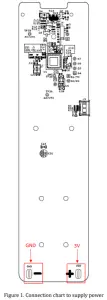
When the remote control is used with a shell, it is directly powered by two dry batteries. As shown in Figure 2.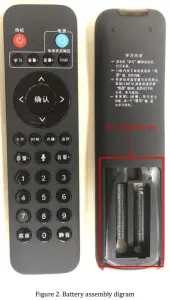
Download firmware
To download firmware into TLSR8258ARC48D, first make sure the TLSR8258ARC48D is supplied with power normally. That is, connect the power to the VDD, and connect the GND . As shown in the Figure 3. Then connect TP34 (SWS) of the TLSR8258ARC48D with SWM of a Burning EVK. Meanwhile, connect the miniUSB interface of the burning EVK with PC US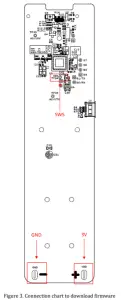
Test RF signal
To test RF signal of TLSR8258ARC48D, first make sure the TLSR8258ARC48D is supplied with power normally. That is, connect the power to the VDD, and connect the GND. Attach the semi-rigid cable welding steel to the PCBA GND. Then solder wire core to feed point. As shown in the Figure 4.
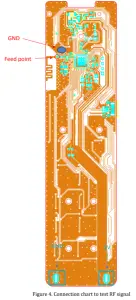
FCC Statement
This device complies with Part 15 of the FCC rules. Operation is subject to the following two conditions: 1) this device may not cause harmful interference, and 2) this device must accept any interference received, including interference that may cause undesired operation.
This equipment has been tested and found to comply with the limits for a Class B digital device, pursuant to Part 15 of the FCC rules. These limits are designed to provide reasonable protection against harmful interference in a residential installation. This equipment generates, uses and can radiate radio frequency energy and if not installed and used in accordance with the instructions, may cause harmful interference to radio communications. However, there is no guarantee that interference will not occur in a particular installation. If this equipment does cause harmful interference to radio or television reception, which can be determined by turning the equipment off and on, the user is encouraged to try correct the interference by one or more of the following measures:– Reorient the receiving antenna.– Increase the separation between the equipment and receiver.– Connect the equipment into and outlet on a circuit different from that to which the receiver is connected.– Consult the dealer or an experienced radio/TV technician for help.
Changes or modifications not expressly approved by the party responsible for compliance could void your authority to operate the equipment.

References
[xyz-ips snippet=”download-snippet”]

